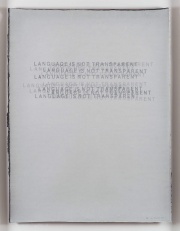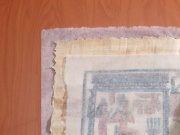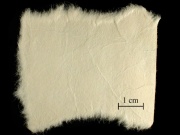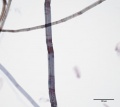Difference between revisions of "Abaca"
m (Text replace - "== Authority ==" to "== Sources Checked for Data in Record ==") |
|||
| Line 29: | Line 29: | ||
[[media:download_file_5.pdf|Abrasives]] | [[media:download_file_5.pdf|Abrasives]] | ||
| − | [[ | + | [[File:Properties_of_Natural_Fibers.pdf|Properties of Natural Fibers]] |
| − | |||
| − | |||
== Additional Images == | == Additional Images == | ||
Revision as of 13:28, 25 July 2016
Description
A name used for both a banana-like plant (Musa textilis) as well as the strong fibers obtained from its leaf stems. The plant is native to the Philippines. It was exported to Europe and elsewhere in the 19th century and is now cultivated in Central America. Abaca fibers contain Cellulose and Lignin (~7%). Formerly known as Manila hemp, the fibers are lustrous and range in color from cream to light purple to brown or black. The texture of the fibers vary from silky to stiff. Abaca fiber is extensively used for rope, especially in marine environments since it is buoyant and does not swell in water. Coarse fibers are used for heavy cordage, twine, hats, hammocks, manila paper, and tissue paper. Fine, glossy fibers of abaca, called pinukpok or lupis, are used to make fabric for carpet, tablecloths, placemats, purses, rugs and ethnic costumes. Waste fibers are used to produce papers with high wet strength, such as tea bags.
Synonyms and Related Terms
Musa textilis; Manila hemp; Manilla hemp (Br.); abacá (Esp., Port.); manila; pinukpok; lupis; agotai; cebu hemp; davao hemp; abaka;
Other Properties
Does not swell or lose strength in water. Fiber length = 1 - 5 m (3-15 feet). Denier ranges from 300-500
Paper fiber type: Non-woody/bast. Using transmitted light microscopy, fibers are identified by their uniform shape, thin walls, and pointed ends. Fibers are relatively short with a wide, well-defined lumen. Appearance with Graff "C" stain: Nodes will stain red. Average dimensions of fibers: length, 5-6mm. 20-24μm wide. Common pulping method: alkaline sulfite.
Hazards and Safety
Combustible, but self-extinguishing.
Additional Information
G.Cook, Handbook of Textile Fibres:I. Natural Fibres, 5th edition, Merrow Publishing Co., Durham, England, 1984.
Comparisons
Properties of Natural Fibers.pdf
Additional Images
Sources Checked for Data in Record
- Richard S. Lewis, Hawley's Condensed Chemical Dictionary, Van Nostrand Reinhold, New York, 10th ed., 1993 Comment: fibers 1-3 m in length
- Anne Grimmer, Glossary of Building Stone Terms, A Glossary of Historic Masonry Deterioration Problems and Preservation Treatments, National Park Service, Washington DC, 1984
- G.S.Brady, Materials Handbook, McGraw-Hill Book Co., New York, 1971
- ASTM, Standard Terminology Relating to Natural and Artificial Weathering Tests of Nonmetallic Materials, Annual Book of ASTM Standards, Section 14, General Methods and Instrumentation, ASTM, G113, 1371-1373, Sep-94
- The American Heritage Dictionary or Encarta, via Microsoft Bookshelf 98, Microsoft Corp., 1998 Comment: fibers up to 5 m in length
- Fairchild's Dictionary of Textiles, Phyllis G.Tortora, Robert S. Merkel (eds.), Fairchild Publications, New York City, 7th edition, 1996
- Matt Roberts, Don Etherington, Bookbinding and the Conservation of Books: a Dictionary of Descriptive Terminology, U.S. Government Printing Office, Washington DC, 1982 Comment: fibers 3-12 mm in paper
- Marja-Sisko Ilvessalo-Pfäffli. Fiber Atlas: Identification of Papermaking Fibers (Springer Series in Wood Science). Springer, 1995.
- Walter Rantanen. "Fiber ID Course." Integrated Paper Services. June 2013. Lecture.
- Rosalie Rosso King, Textile Identification, Conservation, and Preservation, Noyes Publications, Park Ridge, NJ, 1985 Comment: fibers 1-3 m (text); fibers 5-11.5 feet in length (table)
- Book and Paper Group, Paper Conservation Catalog, AIC, 1984, 1989
- Art and Architecture Thesaurus Online, http://www.getty.edu/research/tools/vocabulary/aat/, J. Paul Getty Trust, Los Angeles, 2000







